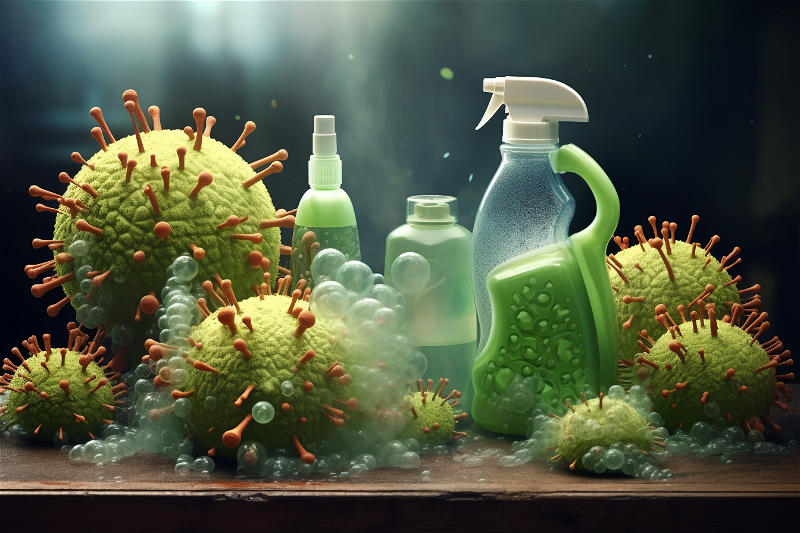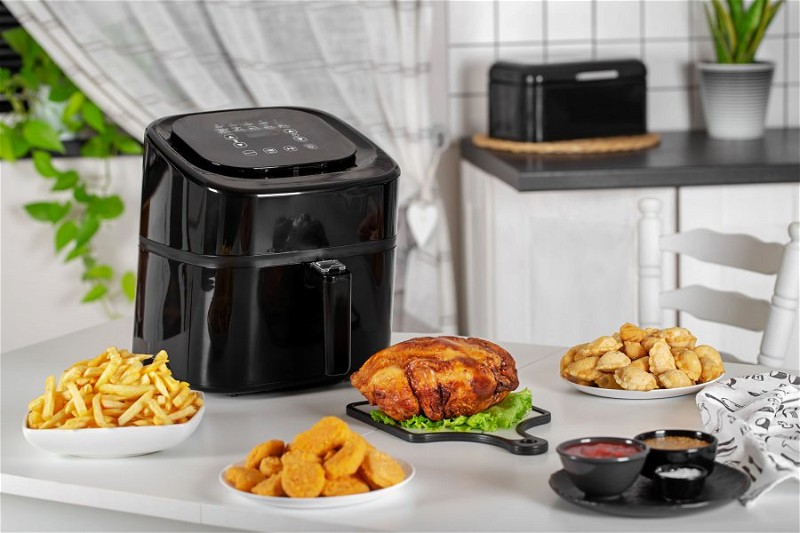
A clean and hygienic home is essential for maintaining a healthy lifestyle. We all know the importance of regular cleaning, but there are hidden germs lurking in the most unexpected places. These germs can pose potential health risks to you and your family, making it crucial to address them appropriately.
As we go about our daily lives, we come into contact with numerous surfaces and objects in our homes. From door handles to light switches, these high-touch areas can become hotspots for germs and bacteria to thrive. While they may seem innocuous, neglecting to clean and disinfect these surfaces regularly can lead to the spread of illnesses and compromise the overall well-being of your household.
In this article, we will shed light on the often overlooked high-touch areas in your home that demand special attention when it comes to cleaning. By understanding the risks associated with hidden germs and taking the necessary steps to maintain a clean living space, you can create a safer and healthier environment for yourself and your loved ones.
Understanding Hidden Germs
Germs, also known as microorganisms, are tiny organisms such as bacteria, viruses, and fungi that are invisible to the naked eye. While not all germs are harmful, some can cause a range of illnesses, from minor infections to more severe diseases.
In the home environment, germs can be transmitted through various means, including direct contact with contaminated surfaces, respiratory droplets from coughing or sneezing, and cross-contamination from person to person. High-touch areas in the home act as reservoirs for these germs, as they are frequently in contact with multiple individuals and surfaces throughout the day.
Bacteria, for instance, can thrive on surfaces for extended periods, waiting for an opportunity to transfer to a new host. Viruses, on the other hand, can survive on surfaces and retain their infectivity, making them a significant concern for households, particularly during flu seasons or outbreaks of illnesses like the common cold.
To ensure a clean and hygienic living space, it is vital to identify these high-touch areas and implement proper cleaning and disinfection practices. By doing so, you can minimize the risk of germ transmission, maintain a healthier home, and promote overall well-being for everyone residing in it.
Identifying High-Touch Areas
To effectively combat the presence of hidden germs in your home, it is crucial to identify and target high-touch areas. These are the surfaces and objects that are frequently touched by multiple people or by the same person multiple times throughout the day. By paying extra attention to these areas, you can significantly reduce the risk of germs spreading and help maintain a cleaner living environment. Let’s explore some of the most common high-touch areas in different areas of your home:
Kitchen:
- Door handles and cabinet knobs: These are touched multiple times daily as you enter and leave the kitchen and access cabinets for utensils and supplies.
- Refrigerator handle and water dispenser: The refrigerator handle, in particular, can harbour a considerable number of germs due to its frequent use.
- Microwave and oven controls: Buttons and dials on these appliances are often touched with contaminated hands during meal preparation.
- Faucets and sink handles: Germs from raw food and dirty dishes can easily transfer to these surfaces during cooking and cleaning activities.
Bathroom:
- Toilet flush handles: When you flush the toilet, germs from the bowl can be easily transferred to the flush handle.
- Faucets and shower controls: These surfaces come into contact with wet and soapy hands, creating an ideal environment for germ growth.
- Light switches: Often overlooked, light switches in the bathroom are touched before and after washing hands, making them potential germ hotspots.
- Towel racks and doorknobs: Towel racks and doorknobs are frequently touched with both clean and dirty hands, making them susceptible to contamination.
Living Room:
- TV remote controls: Remote controls are used by everyone in the household and can harbor germs from various sources.
- Coffee table and end table surfaces: These surfaces often accumulate items and may be neglected during regular cleaning, allowing germs to thrive.
- Gaming controllers and gadgets: Items that are frequently touched by hands during entertainment activities can become germ reservoirs.
- Light switches and lamp switches: Like in other rooms, light switches are touched multiple times a day in the living room.
Bedroom:
- Bedside table surfaces and lamp switches: These areas are often touched before bedtime and after waking up, potentially transferring germs to and from the bed.
- Door handles and light switches: Bedroom door handles and light switches may harbor germs from various sources.
- Electronics and charging stations: Items like smartphones and tablets are handled constantly and can be carriers of germs.
- Closet door handles: While not as frequently touched as other areas, closet door handles still merit attention during cleaning routines.
The Hidden Germs’ Health Impact
The presence of hidden germs in your home can have significant health implications, especially for vulnerable individuals such as children, the elderly, and those with weakened immune systems. Some common illnesses caused by household germs include:
Common cold and flu: Influenza viruses and rhinoviruses responsible for the common cold can easily spread through contact with contaminated surfaces and respiratory droplets.
Gastrointestinal infections: Bacteria like Escherichia coli (E. coli) and Salmonella can cause food poisoning and gastrointestinal infections when ingested through improperly cleaned kitchen surfaces or contaminated food.
Respiratory infections: Germs, such as Streptococcus pneumoniae and Haemophilus influenzae, can cause respiratory infections such as pneumonia and bronchitis.
Skin infections: Staphylococcus aureus and other bacteria can lead to skin infections and even more severe conditions like cellulitis when cuts or wounds are exposed to germs.
It is essential to be aware that some germs can survive on surfaces for extended periods, making it possible for someone to contract an illness even after the initial carrier is no longer present. Proper cleaning and disinfection of high-touch areas, combined with good hand hygiene practices, can significantly reduce the risk of germ transmission and protect the health of your household members.
Prioritizing Cleaning and Disinfection
Now that we’ve identified the high-touch areas in your home, it’s time to develop an effective cleaning and disinfection routine to combat hidden germs. Prioritizing the cleaning of these areas will significantly reduce the risk of germ transmission and help maintain a healthier living space. Here are some essential steps to follow:
Establishing a cleaning routine: Set a regular schedule for cleaning high-touch areas. Daily cleaning of frequently used surfaces and objects is ideal, but at a minimum, aim for a thorough cleaning at least once a week.
Choosing the right cleaning products: Use appropriate cleaning products based on the surfaces you’re cleaning. For non-porous surfaces like door handles and light switches, disinfectant wipes or sprays with at least 70% alcohol content are effective. For porous surfaces like wood, use mild soap and water for cleaning and follow up with a suitable disinfectant.
Proper disinfection techniques for high-touch areas: When disinfecting, ensure that you follow the product’s instructions for the appropriate contact time. Let the disinfectant sit on the surface for the specified duration before wiping it off. This allows enough time for the product to kill the germs effectively.
The role of hand hygiene in preventing germ spread: Encourage proper handwashing among household members, especially after touching high-touch surfaces or coming into contact with others outside the home. Hand sanitizer with at least 60% alcohol can be used when soap and water are not readily available.
By implementing these practices, you can create a cleaner and healthier environment in your home, reducing the risk of illness and promoting the well-being of your family.
Additional Tips for a Germ-Free Home
While focusing on high-touch areas is essential, there are additional measures you can take to maintain a germ-free home. Consider the following tips to enhance your cleaning efforts:
- Wash frequently used items like bed linens, towels, and clothes regularly in hot water to eliminate germs and bacteria.
- Use appropriate cleaning products and microfiber cloths to clean and disinfect smartphones, tablets, keyboards, and other frequently used electronics.
- Place doormats at entryways to trap dirt and germs from shoes. Encourage family members and guests to remove their shoes upon entering the home.
- Regularly bathe and groom pets to reduce the spread of germs, especially if they spend time outdoors.
By incorporating these additional measures into your cleaning routine, you can further safeguard your home from hidden germs, creating a healthier living environment for everyone.
Remember, maintaining a clean and hygienic home is an ongoing process. Regularly assessing and improving your cleaning practices will help keep germs at bay and minimize the risk of illness. By prioritizing high-touch areas and taking proactive steps to eliminate hidden germs, you can create a safe and healthy living space for you and your loved ones.
Beyond Cleaning: Maintaining a Healthy Home Environment
In addition to regular cleaning and disinfection, there are other essential factors to consider for maintaining a healthy home environment and reducing the presence of hidden germs:
Improving indoor air quality: Good ventilation is crucial for minimizing the concentration of airborne germs and pollutants. Ensure your home has proper airflow by opening windows when possible and using exhaust fans in bathrooms and kitchens. Regularly change air filters in heating, ventilation, and air conditioning (HVAC) systems to keep the air clean and free from dust and allergens.
Organizing clutter to minimize germs: Cluttered spaces can be challenging to clean thoroughly and may provide hiding spots for germs and pests. Regularly declutter and organize your home to make cleaning more efficient and effective.
Humidity control for germ prevention: Maintaining an appropriate indoor humidity level can help prevent mold growth and reduce the survival of certain viruses and bacteria. Use a humidifier in dry environments and a dehumidifier in humid areas to maintain optimal humidity levels.
By paying attention to these factors, you can create a healthier living space and complement your cleaning efforts in the fight against hidden germs.
Keep Those Germs Gone!
Maintaining a clean and germ-free home is crucial for the well-being of everyone in your household. While many areas in your home may appear clean at first glance, hidden germs can lurk on high-touch surfaces, posing potential health risks. By identifying these high-touch areas and prioritizing their cleaning and disinfection, you can significantly reduce the spread of germs and promote a healthier living environment.
Remember to establish a regular cleaning routine, choose appropriate cleaning products, and practice proper disinfection techniques to target these areas effectively. Additionally, promote good hand hygiene among household members to further prevent the spread of germs.
Incorporate additional tips like laundering high-contact items, cleaning electronic devices, using doormats, and maintaining pets’ hygiene to reinforce your cleaning efforts. Furthermore, don’t overlook the importance of indoor air quality and clutter management in creating a healthy home.
By taking a comprehensive approach to cleaning and maintaining your home, you can ensure that hidden germs have no place to thrive. Embrace these practices, and your efforts will lead to a safer and healthier living space for you and your loved ones, helping everyone enjoy a more hygienic and comfortable lifestyle.






